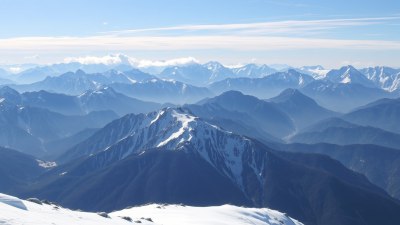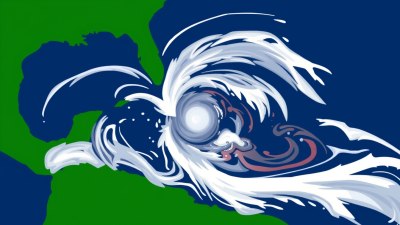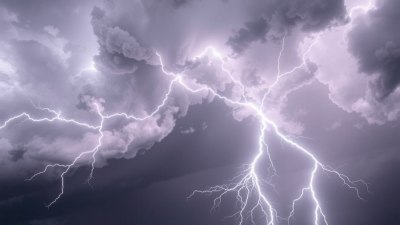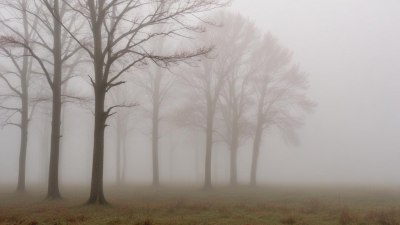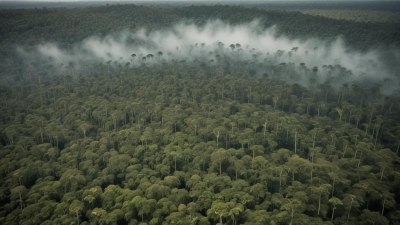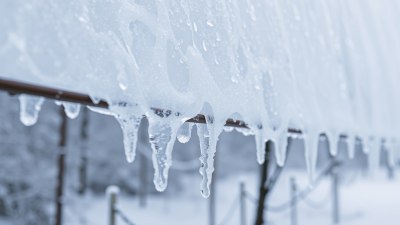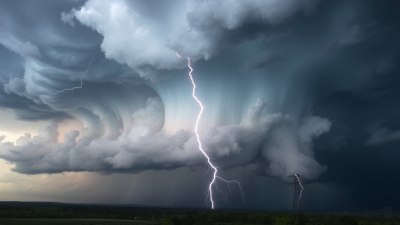Why North America Can’t Decide If It’s Frozen, Swampy, or a Desert
Explore the climatic contradictions of North America, revealing its diverse ecosystems from frozen tundras to arid deserts.
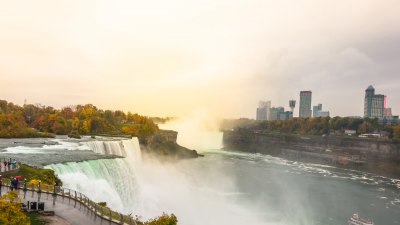
This image was created with the assistance of Freepik
North America is a continent that offers a unique blend of climates and landscapes. From the frozen tundras of the Arctic regions to the tropical swamps of Florida, and even the arid deserts of the Southwest, it boasts an incredible variety of ecosystems. This climatic diversity has sparked countless debates about why North America can't quite seem to settle into a singular identity. The continent's vast geographical expanse, ranging from its beautiful coastlines to towering mountains, plays a significant role in this climatic conundrum.
To understand why North America presents such varied climates, we must first consider the geographical features that shape weather patterns. The continent stretches over several latitudes, affecting the climate drastically. For instance, Northeastern Canada experiences extremely cold winters with heavy snowfall, while Southern California enjoys a Mediterranean climate with warm, dry summers.
Frozen Landscapes
The northernmost regions of North America are characterized by long, brutal winters and short, cool summers. The Arctic regions, including parts of Alaska and Northern Canada, remain covered in snow for several months, leading to a tundra biome where only the hardiest plants survive. The subarctic areas experience a similar freeze but can have slightly more moderate temperatures during summer. This freezing and thawing cycle influences not only the local flora but also fauna adapted to these extreme conditions.
In addition to the Arctic tundra, many mountainous areas, such as the Rockies, are known for their cold climate with snow-capped peaks. The elevation influences temperature, leading to colder conditions as one ascends. This aspect explains why ski resorts flourish in such locations, attracting winter sports enthusiasts seeking the thrill of gliding down powdery slopes.
Swampy Regions
Transitioning to the more humid climates, the southeastern United States, particularly Florida and Louisiana, are famous for their swampy landscapes. The Everglades in Florida is a prime example of this, with its delicate ecosystem of rivers, mangroves, and wetlands. The humidity creates an ideal setting for various species, including alligators and a plethora of bird species.
Swamps play a significant role in biodiversity and are crucial for water filtration and building resilient ecosystems. However, several regions are facing challenges, including rising sea levels and urban development. These issues threaten the delicate balance within these swampy areas, showcasing the struggle between nature and human expansion.
Desert Environments
In stark contrast to the freezing climates and humid swamps are the arid deserts of the American Southwest. Regions like Arizona and Nevada depict some of the driest landscapes on the continent. The Sonoran Desert, known for its iconic saguaro cacti, experiences extreme temperature fluctuations—scorching during the day and surprisingly cool at night. Such conditions lead to unique adaptations among the fauna and flora, which have evolved to withstand the harsh climatic challenges.
These desert areas are characterized by minimal rainfall and extreme evaporation rates due to intense sunlight. The ecosystems are delicate, requiring careful conservation efforts as they are particularly vulnerable to climate change and human intervention. Water scarcity is a pressing issue, affecting agriculture and the livelihoods of local communities.
Climate Change Impact
The face of North America's climate is changing due to the overarching impact of climate change. Each of the three climates—frozen, swampy, and desert-like—is affected differently. The Arctic regions are seeing a rapid change in temperature, leading to significant melting of the ice caps, which threatens the traditional habitats of many species. Alongside losing ice, we observe changes in migration patterns of animals, altering the ecosystems further.
In swampy areas, rising sea levels are a looming threat, with communities facing increased flooding and habitat loss. The delicate ecosystems that thrive in these areas are susceptible to both rising waters and saltwater inundation. Meanwhile, deserts are battling the dual forces of increased temperatures and varying precipitation patterns, which could lead to prolonged drought conditions impacting agriculture and water supplies.
The Human Element
Another layer to the climatic debate in North America is the human influence on the environment. Urbanization, deforestation, and fossil fuel consumption contribute to changes in natural weather patterns. The creation of cities has led to the phenomenon known as urban heat islands, where densely populated and developed areas experience higher temperatures than their rural counterparts.
These human activities often exacerbate local climate conditions. For instance, land-use changes can disrupt natural drainage systems, leading to increased flooding in swampy areas. Additionally, unsustainable agricultural practices in desert regions can deteriorate land and further deplete already scarce resources. As a result, societies must adapt to these changes while striving to minimize their environmental footprint.
Resilience and Adaptation
Despite the challenges presented by varying climates and ecological changes, North America continues to showcase resilience. Many communities are adapting to climate shifts by employing sustainable practices to preserve natural resources. Urban planners are increasingly considering green infrastructure, promoting urban forests and permeable surfaces to mitigate flooding and combat heat. Innovative technologies are paving the way for water conservation in arid regions, pushing for sustainable agricultural practices that protect both the land and water sources.
Local governments and organizations are also implementing restoration projects to revive wetlands and swamps, demonstrating commitment to preserving biodiversity. These efforts highlight an understanding of the interconnectedness of ecosystems and the importance of collective responsibility in combatting environmental challenges.
North America's identity as a continent cannot be confined to a single climate or landscape. Its frozen tundras, swampy wetlands, and arid deserts coexist, each presenting unique characteristics shaped by a multitude of factors, from geography to human influence. Each region tells a story, a complex narrative of adaptation and survival. As the continent continues to grapple with the implications of climate change, taking steps toward sustainable practices and preserving its diverse ecosystems is crucial. The future of North America hinges on the collective ability to embrace its climatic contradictions while fostering resilience against environmental threats.
